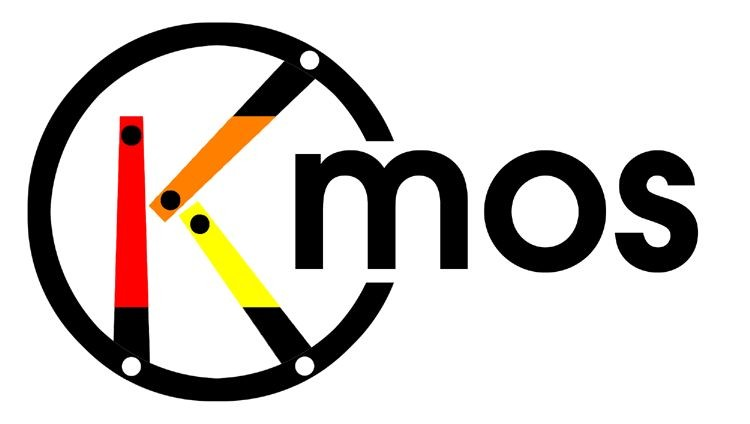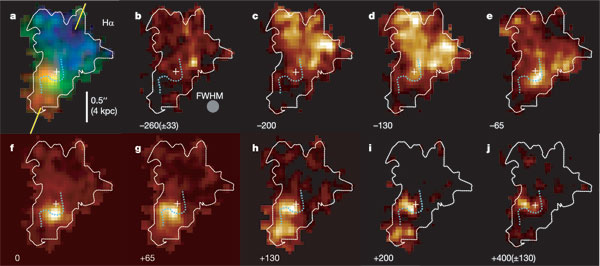
|
|
Scientific Objectives
Any advance in observational cosmology is finally based on the quality of observational data obtained with ever-improving sophisticated telescopes and instruments. KMOS is one of the next generation instruments allowing deeper insight especially into galaxy formation and evolution.
Due to the envisaged or already available capabilities of survey instruments in combination with large telescopes (SDSS, WFCAM, VISTA, VST, HAWK-I etc.), the community of observational cosmologists over the next few years will be provided with basic data of a large number of galaxies across a wide redshift range. Especially the high-redshift samples will enable a new view into the early stage of the universe when galaxies were young or still forming. Although already these ensemble data, mainly detected by means of photometric techniques, can deliver valuable insight, a deeper understanding of the detailed physics underlying formation and growth of galaxies requires more information about their individual properties. Such knowledge, in particular for high-redshift objects, is not or not sufficient available so far. Especially the one-dimensional spectra produced by classical spectroscopy are insufficient for a further investigation of the often complex galaxy morphologies.
The preferable solution to obtain spatially resolved spectral data instead is Integral Field Unit (IFU) Spectroscopy:

|
Principle of Integral Field Unit Spectroscopy: A 2-dimensional image will first be sliced, the slices then dispersed on a common slit and finally a 3D data cube is reconstructed from the obtained spectra. (Credit: ESO Press Releases) |
Instruments like SINFONI/SPIFFI providing this ability have already delivered quite fascinating results. The figure below shows the capability of IFU instruments to resolve velocity differences over a small field. However, the existing instruments are restricted to single targets while significant statistical conclusions can be derived from large samples only. Moreover, the majority of the objects to be observed is expected to be faint, therefore increasing the necessary exposure time and reducing the efficiency of observations.

|
Velocity maps of H&alpha: Obtained from spatially resolved SPIFFI spectra of the star-forming galaxy BzK-15504 (z = 2.3834, equivalent to 20% of the current age of the Universe). The well-defined regions of positive and negative velocities clearly indicate a rotating disk. (Genzel et al. 2003, Nature 442, 2006) |
As an additional point, quite naturally the most interesting spectral features of the high-redshift galaxies under discussion are those already known from optical spectroscopy of nearby galaxies and now only band-shifted to the near infrared.
Consequently, the following requirements have driven the development of KMOS and are realised in the instrument design. KMOS
- shall be able to observe multiple (up to 24) targets simultaneously, including such samples which are clustered within only a small angular field.
- shall deliver spatially resolved and not only integrated spectral data.
- shall enable observations of high-redshift galaxies using their optical diagnostics by covering the J,H and K atmospheric windows (0.8 ... 2.5 μm) in the near infrared.
KMOS will help answer some of the most fundamental questions concerning the formation of galaxies, their intrinsic properties and the relative importance of their intrinsic and environmentally driven evolution.
Last modified: 2022-07-06 (Michael Wegner)